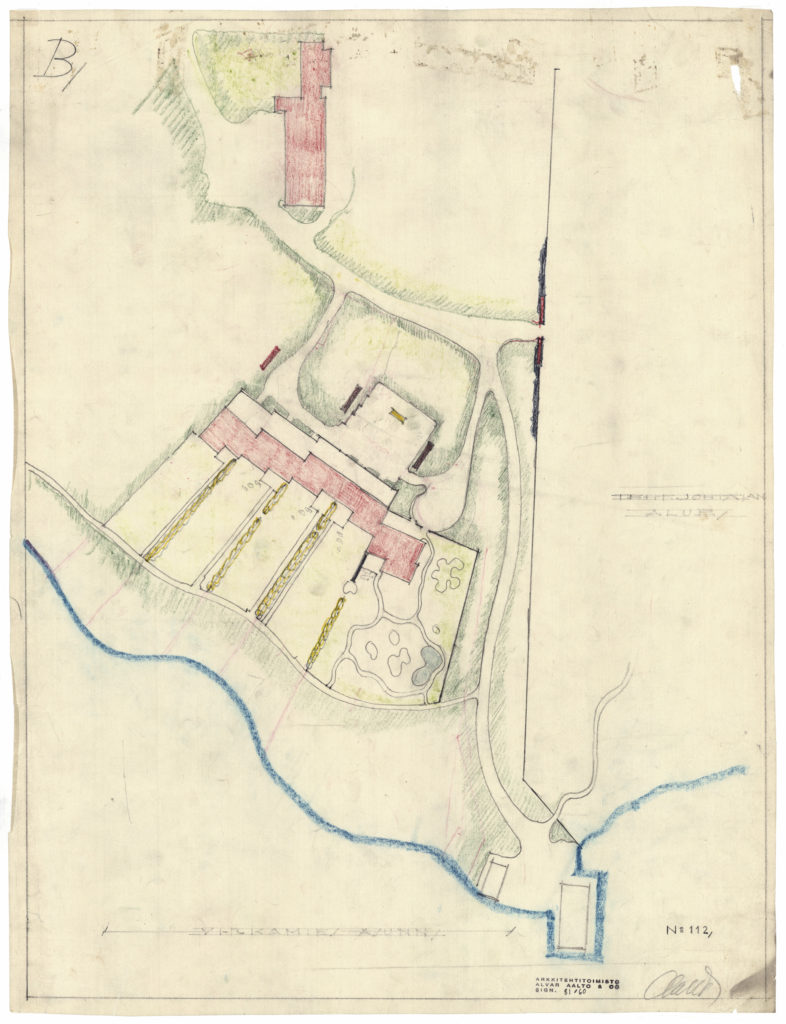
Press release
15th Alvar Aalto Symposium and Jyväskylä at the core of the international architectural discussion in August 2021
20.5.2021
Read more
22. 4.
Monday
23. 4.
Tuesday
24. 4.
Wednesday
25. 4.
Thursday
26. 4.
Friday
27. 4.
Saturday
29. 4.
Monday
30. 4.
Tuesday
1. 5.
Wednesday
2. 5.
Thursday
3. 5.
Friday
4. 5.
Saturday
18. 5.
Saturday
20. 5.
Monday
21. 5.
Tuesday
22. 5.
Wednesday
23. 5.
Thursday
24. 5.
Friday
25. 5.
Saturday

What is the path from ideal communities to sustainable industrial ecosystems? How are megatrends; digitalization, new technologies, urbanization, climate change and the demands of sustainable development changing industrial fabrication and design? The automated factories of the future, operating through networked connections, will be even smarter and run by robots. As buildings the factories are less often meeting places for people, as the work is increasingly carried out virtually and via networks.

Factory environments have always inspired art, literature and film. Which kind of environments and architecture does the industrial productions create in the future? On the other hand, what are the possibilities for reuse and regeneration of progressive historical industrial premises? How is renovation carried out following the principles of sustainable development, and for the needs of the future? And not forgetting Alvar Aalto’s concern for the human scale.
The virtual 15th International Alvar Aalto Symposium – Future of Industry, focused on the current challenges of the spaces and milieus of the history, present and future manufacturing industry. The main theme was studied from three specific viewpoints. Reliable partner: a factory building in the city, Responsible action: sustainable industrial milieus and Building identity: The role of industrial architecture in constructing community, recognizability and perceived value.

Industrial construction, urban planning and future visions were topical themes introduced by speakers architect Xu Tiantian (DnA_Design and Architecture, China), architect Thomas Bonde-Hansen (Gottlieb Paludan Architects, Denmark), architect, professor Ute Schneider (KCAP Architects&Planners, Rotterdam/Zürich/Shanghai), and architect Tuomas Kivinen (Virkkunen & Co, Finland).
Beniamino de Liguori Carino, secretary general of the Adriano Olivetti Foundation, and architect Pippo Ciorra of the MAXXI MUSEUM brought their greetings from Italy. Film Programmer at the National Audiovisual Institute KAVI, Antti Alanen, spoke about Alvar Aalto as a film aficionado, who became the chairman of the first Finnish film club called Projektio.
The future prospects of the forest industry were discussed by Sebastián Hernández Maetschl, Manager for Building Concepts for Building Solutions and Ville Hietalahti, Senior Vice President, Enterprise Risk Management and Real Estate Finland, both at Stora Enso (Germany and Finland). Designer Pirjo Kääriäinen, Associate Professor in Design and Materialities at the Aalto University, spoke about the biomaterial innovation boom in Finland; for example, how wood-based raw materials, such as cellulose, can replace oil-based raw materials and also create future markets.
Architect Charlotte Skene Catling (Skene Catling de la Peña, UK) and Adam Lowe, Adjunct professor at Columbia University (USA) and founder of the Factum Foundation (Spain) spoke about the AALTOSIILO art project, and the research centre for industrial heritage which is being realised in the Aalto-designed silo building from 1931 in Toppila in Oulu. The ongoing hydropower cultural heritage project VekuVaku highlights the hydropower plants along the Oulujoki and the Luleå rivers and their communities; building researcher Samuli Paitsola spoke at the symposium about the works of Alvar Aalto and Aarne Ervi along the Oulujoki river.
The symposium moderators were architect Antti Ahlava from Aalto University, chairman of Docomomo Suomi Finland Petteri Kummala from the Finnish Museum of Architecture and architect Tommi Lindh, CEO of Alvar Aalto Foundation.
Symposium was this year held only for virtual audiences around the world. The 2-day virtual program included besides speeches, conversations and virtual Aalto site tour, e. g. an international panel discussion considering how the Alvar Aalto Symposiums have anticipated future developments in architecture, as well as reflected the architectural debate of their time since 1979, moderated by architect, professor Juhani Pallasmaa.
Virtual speeches were held in English. The event was also this time organized by the Alvar Aalto Academy together with the City of Jyväskylä and several other partners.

Nina Heikkonen, Programme Manager
Alvar Aalto Foundation
+358 44 500 1257
nina.heikkonen@alvaraalto.fi
Aila Svenskberg, Communications, PRESS
Alvar Aalto Foundation
+358 40 659 1930
aila.svenskberg@alvaraalto.fi
Captions:
Sunila (Alvar Aalto 1936-54), factory, detail, photo Alvar Aalto Foundation / Maija Holma
Kantola, Mill manager’s residence (Alvar Aalto 1936-37), living room, detail, photo Alvar Aalto Foundation / Maija Holma
Rantala, Engineers’ Row House (Alvar Aalto 1936-52), drawing, scale 1:1500, Alvar Aalto Foundation / AAA 81-60